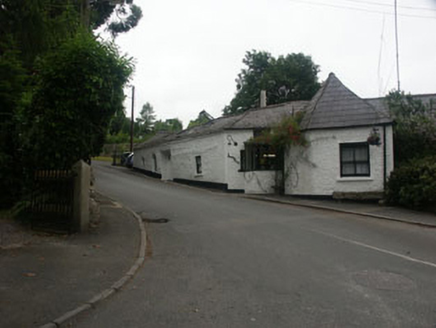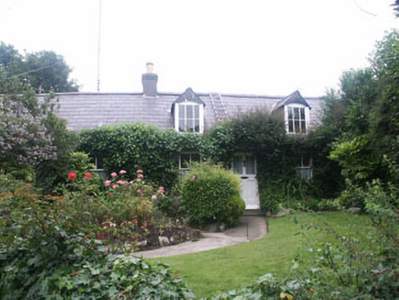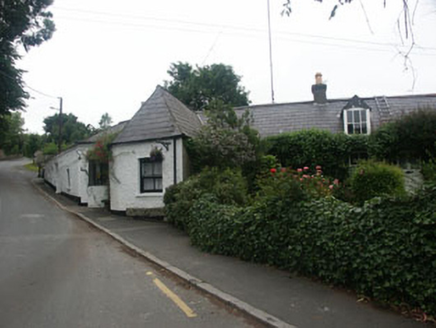Survey Data
Reg No
16305014
Rating
Regional
Categories of Special Interest
Architectural
Original Use
House
In Use As
House
Date
1750 - 1770
Coordinates
327610, 210823
Date Recorded
--/--/--
Date Updated
--/--/--
Description
Semi-detached multiple-bay single-storey roughly L-shaped house, built c.1760, probably as two dwellings, but extended and partly formalised c.1850, now apparently amalgamated as one house. The long, overtly vernacular northern portion of the house lies on a north-south axis along the roadside, rising to higher ground to the north end. The façade of this section is in whitewashed rubble stone with a slated pitched roof with several roof lights. To the east elevation of this section is a mid to later 20th-century gabled extension which gives this part of the building a double-pile north elevation. The main entrance is to the west elevation and consists of a large flat-headed recess within which is a c.1980 partly glazed timber door and sidelight, with another small window also set into the recess just to south of the sidelight. The windows to this section are of various sizes and shapes, some semi-circular headed others flat-headed, and have a mixture of timber frames including sash and fixed light. The southern section lies roughly on an east-west axis away from the roadside, and has a façade totally obscured by plant growth, and a slated pitched roof with small gabled dormers. It has a slightly more formalised front elevation, with a partly glazed timber door with uniform flat-headed windows with timber sash frames. At the intersection of the two main portions of the building, there is a small unusual hipped roof projection with a painted roughcast façade and a flat-headed window with timber sash frame. Attached to the north side of this projection is a further small curved porch-like, flat-roofed projection with painted roughcast base and a completely glazed upper half.
Appraisal
Unusual single-storey dwelling house, possibly originally three or more houses, whose vernacular character is still evident in spite of mid 19th and late 20th-century alterations. One of a small number of its kind still remaining in Delgany, this property is one of the village’s most memorable and remains a good asset to the streetscape.





